
Leave it to Osaka to turn a comedian’s hungover quirkiness into a delicious meal.
The two things Osaka is most famous for are food and comedy, so it makes a certain kind of sense that one of its unique local dishes is something that sounds like a joke and was created thanks to an entertainer.
Nikusui is a combination of niku, meaning “meat,” and sui, “sip” or “slurp.” So what is it? It’s udon noodle soup with beef, but without the udon noodles.
That unusual order is what popular comedian Kyo Hanaki asked for one day back in the 1980s when he walked into an Osaka noodle joint while nursing a hangover, and his order of “Niku udon, hold the udon” eventually came to be known as nikusui. The strips of beef are still served in a bowl of udon broth, with a pinch of sliced negi (green onions) across the top, but you won’t find a single noodle mixed in with them.
When you ask most people what Osaka’s representative foods are, they’ll tell you takoyaki and okonomiyaki. But our Japanese-language reporter Ikuna Kamezawa has heard some show biz celebrities talking about nikusui for years, and when it just so happened that she found herself in Osaka the other day, she knew it was time to try it for herself. If she was going to eat local food, she figured she should have a local pick the restaurant, and in a happy coincidence at the same time that Ikuna was in Osaka, so too was fellow reporter and Osaka native Seiji Nakazawa, who was back home visiting his family during the summer vacation period.
Seiji agreed to meet up with Ikuna in downtown Osaka’s Namba neighborhood. In Ikuna’s eyes, nice guy he may be, Seiji often seems shy and awkward when they’re at SoraNews24 headquarters in Tokyo. So she was surprised to see that when he showed up at their meeting place, he was radiating an aura of dependable confidence.
Takoyaki and okonomiyaki joints are easy to find in Osaka. You can’t go much more than a block in Namba without running into at least one of each. Nikusui is, by comparison, much more elusive, but Seiji knew just the place: Chitose, the very Namba udon restaurant where nikusui was first made!
Chitose is just a three-minute walk from Namba Station. However, the convenient location means that the restaurant can also get very crowded, and there was a huge line of people waiting to get in. Once again, though, Seiji showed his Osaka savvy. Just a few blocks up and one street over from Chitose is Chistose Bekkan, or “Chitose Annex,” Chitose’s newer and larger restaurant that’s usually easier to get into.
▼ The walk from Chitose to Chitose Bekkan
Chitose and Chitose Bekkan may be famous among nikusui fans, but that doesn’t mean they’re stuffy or pretentious. You order by buying a meal ticket from a vending machine, and though you can still get udon noodle soups, the first button on the machine is for nikusui.
▼ 肉吸い = nikusui
Obviously, the nikusui was what Ikuna ordered. She couldn’t help noticing, though, that the nikusui was the same price as the niku udon, 800 yen (US$5.55), even though the niku udon has all the ingredients the nikusui does plus noodles too.
But the prices made sense once Ikuna had her bowl of nikusui before her, since it has a lot more meat in it than the niku udon does.
It’s rare to have meat like this in Japan without it being served with noodles or over a bowl of rice, so the focus on beef, with no accompanying carbs, made Ikuna’s nikusui feel luxuriously protein-packed. The meat was tender and delicious, and the broth on an exalted plane of culinary excellence. In Osaka and the surrounding Kansai region, udon broth has a lighter flavor and more kombu stock whereas in Tokyo and the eastern Kanto region the broth is darker and made with bonito stock and stronger seasoning. Which is better is really a matter of personal preference, and many people like both, but with Ikuna having become accustomed to the Tokyo style, Chitose’s broth felt both exquisite and novel to her palate.
The meat and broth were so captivatingly satisfying that Ikuna didn’t even realize that Chitose’s nikusui comes with a soft-boiled egg. By the time she noticed it, the broth had cooked it into a hard-boiled egg, but that also had given it plenty of time to soak up the broth’s flavor.
Something else Ikuna hadn’t noticed was that in addition to the standard nikusui that she’d ordered, Chitose also offers nikusui with some blocks of tofu as an add-in for 850 yen, and small bowls of tamagakake gohan (raw egg over a bowl of white rice) for 220 yen more.
That’s what Seiji ordered, and seeing him dig in with gusto, Ikuna felt that this, too, was a sign of Seiji’s latent confidence and coolness coming out while he was in the familiar surrounding of his own town. Of course the Osaka guy would know the best customizations for an Osaka specialty! “Wow, you really know all about this nikusui stuff, don’t ya, Mr. Osaka?” she said with a smile…only for Seiji to react with a confusedly furrowed brow.
“Huh? This is the first time I’ve ever eaten nikusui either.”
Yep, it turns out that while nikusui is popular among in-the-know foodies and celebs, and despite its affordable price, it’s not something that everyone in Osaka knows about or eats regularly. Before meeting up with Ikuna, Seiji had asked his parents about nikusui, and neither of them had heard of it.
It just goes to show that there’s really no end to the delicious discoveries waiting for you in Japan.
Restaurant information
Chitose Bekkan / 千とせ べっかん
Address: Osaka-fu, Osaka-shi, Chuo-ku, Namba Sennichimae, Namba Grand Kagetsu 1st floor
大阪府大阪市中央区難波千日前11-6 なんばグランド花月 1F
Open 11 a.m.-8 pm.
Website
Photos ©SoraNews24
● Want to hear about SoraNews24’s latest articles as soon as they’re published? Follow us on Facebook and Twitter!
[ Read in Japanese ]


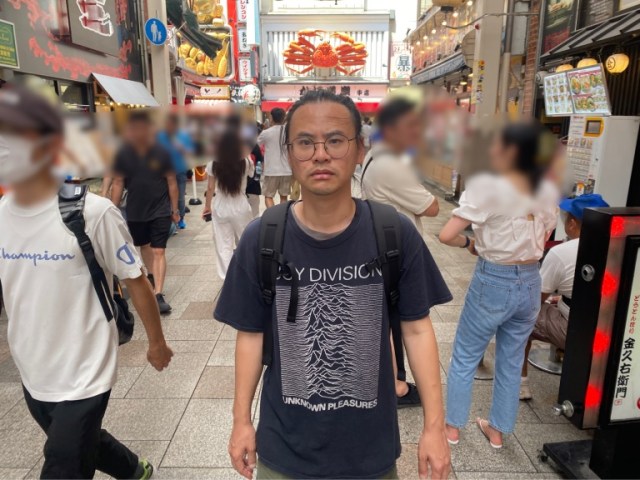
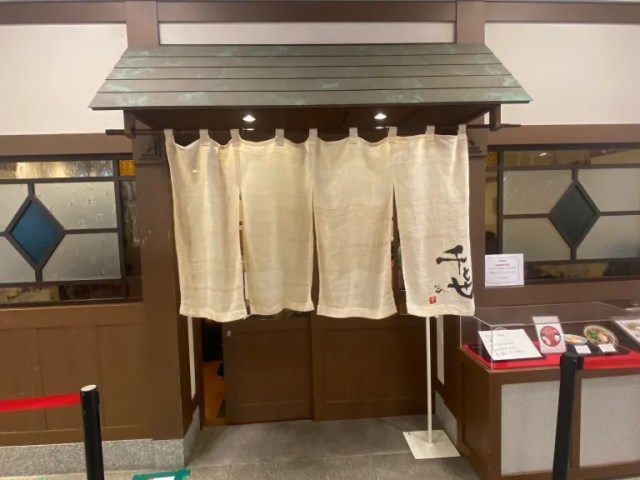

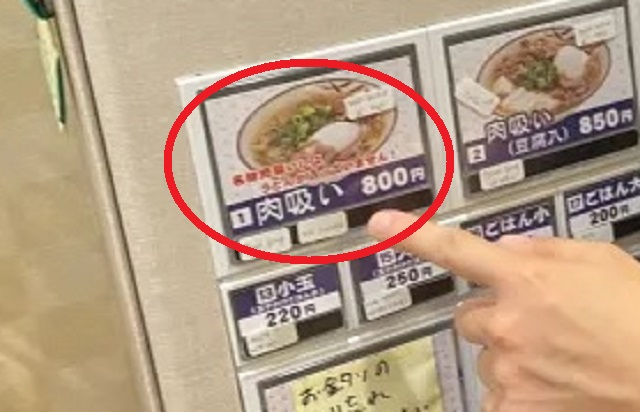
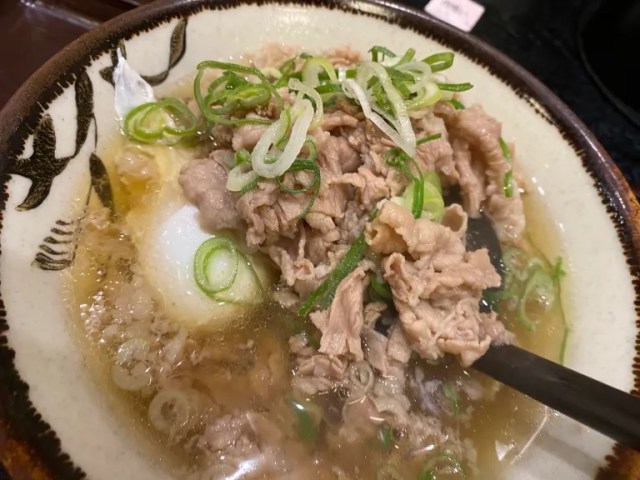
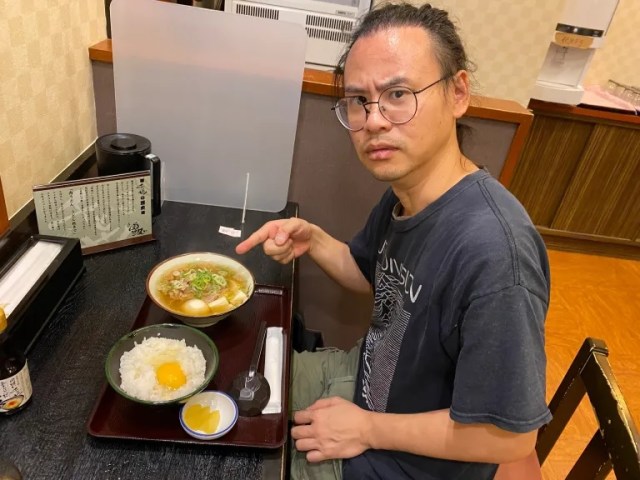
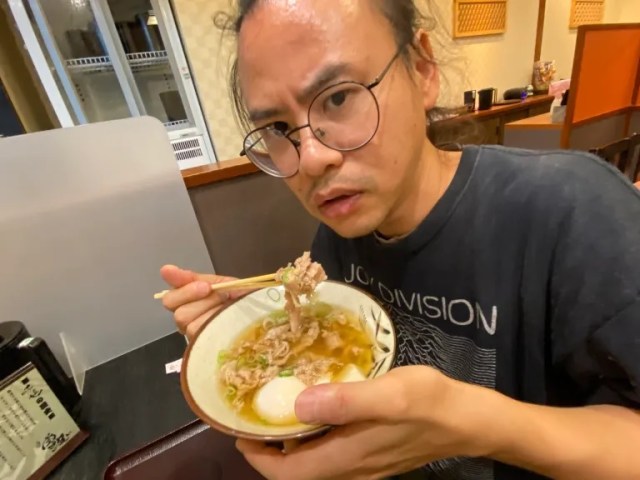
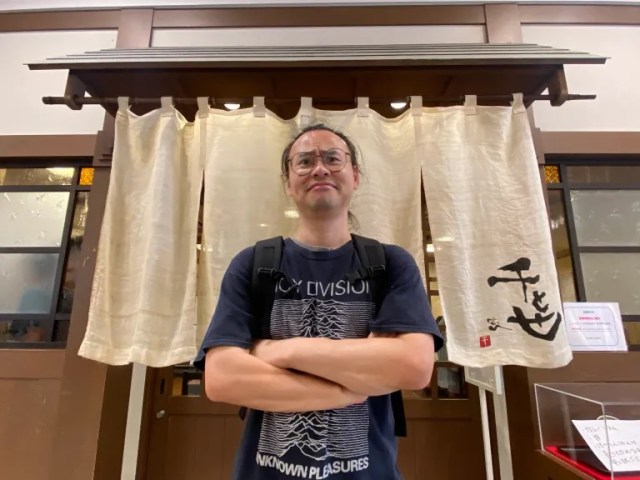
 Our reporter orders food from Uber Eats, falls in love, learns that fate works in mysterious ways
Our reporter orders food from Uber Eats, falls in love, learns that fate works in mysterious ways Popcorn shrimp udon, as in noodles with popcorn and shrimp, now on the menu in Tokyo【Taste test】
Popcorn shrimp udon, as in noodles with popcorn and shrimp, now on the menu in Tokyo【Taste test】 Have you tried Tokushima ramen? No? You should (says our obsessed Japanese-language reporter)
Have you tried Tokushima ramen? No? You should (says our obsessed Japanese-language reporter) Skip Starbucks? A super-cheap, semi-secret alternative to a coffeehouse break in Tokyo
Skip Starbucks? A super-cheap, semi-secret alternative to a coffeehouse break in Tokyo We visit a ramen bar in Croatia, meet a whole new version of ramen we can’t wait to make at home
We visit a ramen bar in Croatia, meet a whole new version of ramen we can’t wait to make at home How to order snacks on a Shinkansen bullet train in Japan
How to order snacks on a Shinkansen bullet train in Japan Hello, cosmetics! Clinique teams up with Hello Kitty this summer for first-time collaboration
Hello, cosmetics! Clinique teams up with Hello Kitty this summer for first-time collaboration Demon Slayer: Kimetsu no Yaiba gets new roller coaster attractions and food at Universal Studios Japan
Demon Slayer: Kimetsu no Yaiba gets new roller coaster attractions and food at Universal Studios Japan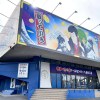 A visit to the best UFO catcher arcade in the universe!
A visit to the best UFO catcher arcade in the universe! To combat declining birth rate, Japan to begin offering “Breeding Visas” to foreigners
To combat declining birth rate, Japan to begin offering “Breeding Visas” to foreigners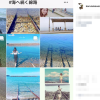 Spirited Away train station and submerged tracks attract Ghibli fans around Japan
Spirited Away train station and submerged tracks attract Ghibli fans around Japan Daiso DIY dessert! 100 yen store’s super-easy mochi sweets kit is our new hero
Daiso DIY dessert! 100 yen store’s super-easy mochi sweets kit is our new hero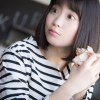 How should you respond when a Japanese person gives you a compliment?
How should you respond when a Japanese person gives you a compliment? New samurai glasses are Japan’s latest weird must-have souvenir
New samurai glasses are Japan’s latest weird must-have souvenir McDonald’s adds new watermelon frappe and fruity macaron to its menu in Japan
McDonald’s adds new watermelon frappe and fruity macaron to its menu in Japan Nintendo history you can feel – Super NES, N64, and GameCube controllers become capsule toys
Nintendo history you can feel – Super NES, N64, and GameCube controllers become capsule toys “The most Delicious Cup Noodle in history” – Japan’s French Cup Noodle wins our heart【Taste test】
“The most Delicious Cup Noodle in history” – Japan’s French Cup Noodle wins our heart【Taste test】 Starbucks releases a cute Frappuccino and Unicorn Cake…but not in Japan
Starbucks releases a cute Frappuccino and Unicorn Cake…but not in Japan Kyoto Tower mascot termination reveals dark side behind cute Japanese characters
Kyoto Tower mascot termination reveals dark side behind cute Japanese characters McDonald’s Japan’s Soft Twist Tower: A phantom ice cream only sold at select branches
McDonald’s Japan’s Soft Twist Tower: A phantom ice cream only sold at select branches Yabai Ramen: What makes this Japanese ramen so dangerous?
Yabai Ramen: What makes this Japanese ramen so dangerous? Finally! Nintendo Japan expands Switch 8-bit controller sales to everybody, Online member or not
Finally! Nintendo Japan expands Switch 8-bit controller sales to everybody, Online member or not Japanese government wants to build luxury resorts in all national parks for foreign tourists
Japanese government wants to build luxury resorts in all national parks for foreign tourists 10 things you should buy at 7-Eleven in Japan
10 things you should buy at 7-Eleven in Japan Studio Ghibli releases anime heroine cosplay dresses that are super comfy to wear
Studio Ghibli releases anime heroine cosplay dresses that are super comfy to wear Woman charged for driving suitcase without a license in Osaka
Woman charged for driving suitcase without a license in Osaka Studio Ghibli unveils My Neighbour Totoro miniature house model
Studio Ghibli unveils My Neighbour Totoro miniature house model Kyoto experiencing problems with foreign tourists not paying for bus fares, but not on purpose
Kyoto experiencing problems with foreign tourists not paying for bus fares, but not on purpose Fighting mild hunger with a Japanese soda that turns into jelly in the stomach【Taste test】
Fighting mild hunger with a Japanese soda that turns into jelly in the stomach【Taste test】 Studio Ghibli’s Howl’s Moving Castle tapestry unveiled in Japan for first time
Studio Ghibli’s Howl’s Moving Castle tapestry unveiled in Japan for first time McDonald’s new Happy Meals offer up cute and practical Sanrio lifestyle goods
McDonald’s new Happy Meals offer up cute and practical Sanrio lifestyle goods Sales of Japan’s most convenient train ticket/shopping payment cards suspended indefinitely
Sales of Japan’s most convenient train ticket/shopping payment cards suspended indefinitely Sold-out Studio Ghibli desktop humidifiers are back so Totoro can help you through the dry season
Sold-out Studio Ghibli desktop humidifiers are back so Totoro can help you through the dry season Japanese government to make first change to romanization spelling rules since the 1950s
Japanese government to make first change to romanization spelling rules since the 1950s Foreigner’s request for help in Tokyo makes us sad for the state of society
Foreigner’s request for help in Tokyo makes us sad for the state of society Ghibli founders Toshio Suzuki and Hayao Miyazaki contribute to Japanese whisky Totoro label design
Ghibli founders Toshio Suzuki and Hayao Miyazaki contribute to Japanese whisky Totoro label design Doraemon found buried at sea as scene from 1993 anime becomes real life【Photos】
Doraemon found buried at sea as scene from 1993 anime becomes real life【Photos】 Tokyo’s most famous Starbucks is closed
Tokyo’s most famous Starbucks is closed Princesses, fruits, and blacksmiths: Study reveals the 30 most unusual family names in Japan
Princesses, fruits, and blacksmiths: Study reveals the 30 most unusual family names in Japan Hey, Thai tuk-tuk driver! Take us to the best Thai restaurant in this part of Bangkok!
Hey, Thai tuk-tuk driver! Take us to the best Thai restaurant in this part of Bangkok! Do people in Osaka really eat crunchy fried noodles with curry? We ask a local, then try it out
Do people in Osaka really eat crunchy fried noodles with curry? We ask a local, then try it out Hey, Croatian taxi driver! Take us to the restaurant with the best štrukli in Zagreb
Hey, Croatian taxi driver! Take us to the restaurant with the best štrukli in Zagreb Shibuya strip show-adjacent extra-fatty beef bowl fails and succeeds in impressing us
Shibuya strip show-adjacent extra-fatty beef bowl fails and succeeds in impressing us Six Japanese foods you won’t want to miss trying in Ise
Six Japanese foods you won’t want to miss trying in Ise Yoshinoya has a semi-secret chicken bowl you won’t find anywhere on its website【Taste test】
Yoshinoya has a semi-secret chicken bowl you won’t find anywhere on its website【Taste test】 One minute is all you need to make this popular instant noodle meal from Okayama【SoraKitchen】
One minute is all you need to make this popular instant noodle meal from Okayama【SoraKitchen】 “Hey Singaporean taxi driver! Take us to the best restaurant in Singapore!”
“Hey Singaporean taxi driver! Take us to the best restaurant in Singapore!” Noodle joint in Harajuku becomes a hot topic with foreigners on Reddit, but is it any good?
Noodle joint in Harajuku becomes a hot topic with foreigners on Reddit, but is it any good? What’s it like to watch a sumo tournament in Tokyo during the pandemic?
What’s it like to watch a sumo tournament in Tokyo during the pandemic? We try a rotating sushi restaurant in New Delhi, are surprised to find no rotating sushi
We try a rotating sushi restaurant in New Delhi, are surprised to find no rotating sushi Why did this stand-and-eat soba noodle shop in Tokyo open in the middle of the pandemic?
Why did this stand-and-eat soba noodle shop in Tokyo open in the middle of the pandemic? Semi-secret Shinjuku sushi lunch is a great way to get your fish fix for cheap in central Tokyo
Semi-secret Shinjuku sushi lunch is a great way to get your fish fix for cheap in central Tokyo McDonald’s breakfast menu in Hong Kong is like nothing we’ve ever seen in Japan
McDonald’s breakfast menu in Hong Kong is like nothing we’ve ever seen in Japan A visit to the real-life Naruto Ramen Ichiraku anime restaurant that’s not in Japan【Photos】
A visit to the real-life Naruto Ramen Ichiraku anime restaurant that’s not in Japan【Photos】 How to make a shaved ice dessert out of instant noodles
How to make a shaved ice dessert out of instant noodles
Leave a Reply